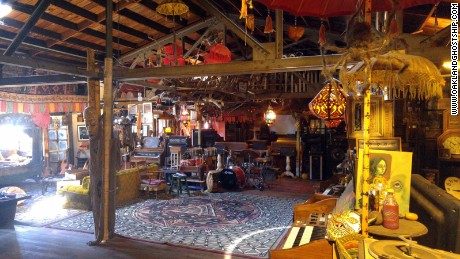Inside the Ghost Ship

January 10, 2017
Tragedy can strike any time, any place, and affect people of any age. On December 2, 2016, a warehouse in Oakland, California caught fire, killing thirty-six people. The age of the victims ranged from seventeen to sixty-one, but most were young adults just wanting to have a good time.
The fire occurred in the Fruitvale neighborhood of Oakland, notable for its large Hispanic population. The warehouse was known as Ghost Ship, and had been converted into a home for an artist collective. Many victims lived in the building, and others were frequent visitors. The night of the fire, record label 100% Silk was hosting a concert. Therefore, between fifty and one hundred people were present.
Survivors describe the inside of the building as complicated and maze-like. The place was often dark, and art pieces were always strewn about, along with loose wood planks and electrical wires. It would be difficult to escape in an emergency, several frequenters explain. Danielle Boudreaux was a friend of the couple who ran Ghost Ship, Derick Ion Almena and Micah Allison. According to CBS News, Boudreaux often argued with the couple, telling them that the warehouse was not a safe home for the couple’s three young children, who are thirteen, seven, and six. The family all survived the fire.
All residents of the warehouse lived there illegally, as the building was still zoned as a warehouse. Over the years, many neighbors have filed reports against the residents, citing garbage piling up on the site, some of it hazardous, and an illegal interior structure. CNN reports that the building had not been officially inspected in thirty years, even after it was partially damaged in a 1988 fire. There had been no application of permits in those three decades, either.
Carmen Brito claims that the fire started in the studio next to her own, and that she was asleep during the onset of the inferno.While the warehouse had no fire alarms or sprinklers, there were several fire extinguishers around the building, but the fire was too large to suppress. She equated it to “trying to put out a bonfire with a squirt gun”.
Interviews, conducted by The New York Times, with survivors who lived in Ghost Ship seemed to antagonize Almena and Allison. While rent was cheap, there was no heat, plumbing, running water, and there was rarely electricity. Max Ohr, another resident, went to the landlord several times asking the electrical situation to be made right. He was refused each time. The cause of the fire is believed to have been a malfunctioning refrigerator, which had caught fire the day before but had been extinguished before it could spread.
Lawsuits are beginning to be filed by families of the victims. Some defendants include Chor Nar Siu Ng, the building’s owner, Almena and Allison, and the Oakland Fire Department, who had reportedly held events at Ghost Ship and should have known about the building’s violations, says Chart Attack. These lawsuits are relatively new, so no word on the chances of restitution for these families.











